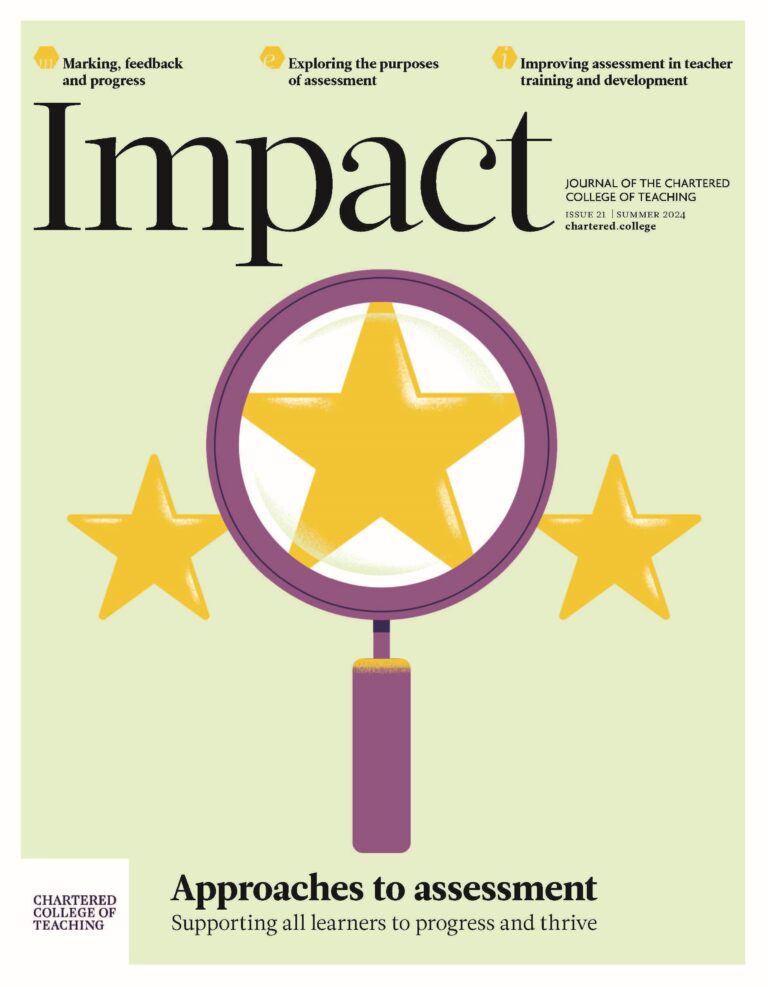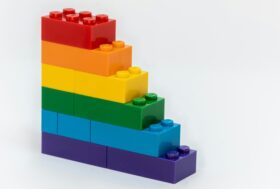FROM THE EDITOR
Professor Bill Lucas, Director, Centre for Real-World Learning, University of Winchester, UK; Co-founder, Rethinking Assessment, UK
Since 1918, success at school in England, Wales and Northern Ireland has been largely judged by means of high-stakes, standardised examinations at the end of secondary education, with the School Certificate for 16-year-olds and the Higher School Certificate two years later. Since then, although the names of these summative, mostly written, tests has changed many times, their intent has hardly wavered.
Eighty years on and there was a significant movement from assessment of learning to assessment for learning in schools (Black and Wiliam, 1998), stressing the power of formative assessment and ushering in a new focus on the many ways in which feedback can improve the quality of learning (Hattie and Timperley, 2007; Collin and Quigley, 2021).
In the last few years, there has been a palpable shift in society’s view of the purposes of school and, therefore, a rethinking of its curriculum, pedagogies and assessment practices.
In terms of curriculum, there is a global move towards breadth and depth (Lucas, 2023), with some key dispositions such as the ‘3Cs’ of creative thinking, collaboration and communication increasingly specified alongside all-important core literacies, and with aspects of meta-cognition, such as curiosity, persistence and social and emotional awareness, explicitly included (World Economic Forum, 2015). If students are to learn not just knowledge and academic skills but also how to apply these in the real world, then the repertoire of pedagogies used by teachers needs to be much expanded, as the Open University’s 10-year Innovating Pedagogy research project (www.open.ac.uk/blogs/innovating) has shown. The speed with which such shifts have taken place has undoubtedly been accentuated by COVID-19, the availability of increasingly sophisticated online learning and the onwards march of AI.
Voices from many different perspectives and from across the world are beginning to question current assessment systems, arguing that they are no longer fit for purpose. Why, for example, do we assume that pencil and paper tests at 16 and 18 are equitable or useful in determining students’ ability to apply what they have learned? Why test so many subjects at 16? Why only measure individuals, when in life we value teamwork and collaboration? Why test whole cohorts at the same time, when in subjects such as mathematics and languages tests could be taken on demand, just as they are in music grade examinations? Why don’t we assess dispositions and complex competences such as creative thinking, the focus of the PISA 2022 innovative domain test (OECD, 2019)?
Above all, how have we dehumanised the process of examinations so that it has become high-stress and so reductionist that after some 13 years of formal education, students’ achievements are defined by a few grades? In the USA, Australia and England, for example, through the work of the Mastery Transcript Consortium (https://mastery.org), Melbourne Metrics (https://education.unimelb.edu.au/melbourne-assessment ) and Rethinking Assessment (https://rethinkingassessment.com), there are serious moves underway to mark the end of secondary school with a digital learner profile that can act as a showcase for a much fuller range of strengths.
Globally, there is mounting evidence that employers, parents and policymakers want to be able to evidence young people’s progress in more nuanced ways (see Figure 1).

Figure 1: Global trends in assessment (Lucas, 2021)
In England, there have been a number of important reports recommending a rethinking of assessment practices, including a reduction in standardised tests, better formative assessment and the development of digital portfolios and profiles (APPG for Schools, Learning and Assessment, 2023; House of Lords Education for 11–16 Year Olds Committee, 2023; Hayward, 2022; Wyse et al., 2022; Times Education Commission, 2022). It is rare to find cross-party unanimity on an issue that can so easily divide along political lines, but the recent House of Lords and House of Commons reports have achieved just that:
‘Building on the work of Rethinking Assessment, the piloting of learner profiles should be extended to include a diverse range of school types and geographical areas.’ (APPG for Schools, Learning and Assessment, 2023, p. 32)
In this summer edition of Impact, there is a refreshing willingness to challenge the status quo and to apply existing research findings in a range of school settings. Poppy Dall’Occo, Alex Morgan and Emmajane Milton dare to imagine a world in which GCSEs do not exist. Drawing on findings from a small-scale, qualitative study based in one secondary school in England, they reveal unsettling implications for the relationship between GCSE assessments and the wellbeing of teachers and their learners in English and mathematics.
Fran Wilby shares a draft learner profile currently being prototyped in schools in England. She shows how learner profiles can unlock changes to curriculum and assessment in schools – encouraging and enabling teachers to teach and evidence skills and dispositions alongside academic achievement – how they encourage pedagogical innovation and increase teacher confidence in multimodal methods of assessment, and how they enable more equitable methods of evidencing student achievement. At the same time, she reminds us how school readiness for such changes varies, as does technical literacy.
Excitingly, the majority of articles explore different aspects of formative assessment – working with students as co-designers, exploring adaptive teaching and assessment, new approaches to marking and feedback, important reminders to us that what we assess needs to be explicitly taught and modelled, and invitations to think about the ways in which formative assessment can be useful for adult learners too.
Bev Coombridge makes a strong case for giving students more say in how they are assessed at primary schools, suggesting that this can move the process from assessment of learning to assessment for and assessment as learning, as teachers and students work together to consider how students will show their learning.
Rachel Eaton and Alistair Crawford offer contrasting perspectives on the role of effective formative assessment for SEND (special educational needs and disability), both within school settings. In the case of Frank Wise School in Banbury, Crawford shows how learning conversations can continue after SEND students leave at 18, to help them to understand what worked well and prepare them for positive, sustainable outcomes in their community.
Katie Cork takes the idea of ‘growth goals’ championed in New South Wales, Australia. She suggests that these can be implemented in English schools to improve outcomes by encouraging a mindset of learning from mistakes, seeing opportunities for growth and allowing learners with diverse learning needs to identify changes that they can implement to support gradual improvements.
Sarah Cunliffe, Leon Walker and Rebecca Morris found themselves in a full-scale trial of their FLASH approach – designing a series of lesson that have specific skills as their learning focus, modelling these skills to students, practising them and then providing opportunities for students to demonstrate their mastery of what they have been explicitly taught, which, sadly, was interrupted by COVID-19 and the temporary cancellation of externally assessed GCSEs.
Jo Day and Purvi Gandhi argue that what works for young people can equally be applied to adults, sharing a pilot case study of an innovative project-based induction model for Year 2 early career teachers. The model integrates essential mechanisms such as goal-setting, feedback and action planning into professional learning. Similarly, Sam Gibbs and Nikki Sullivan suggest that Dylan William’s formative assessment framework, which underpins effective classroom assessment practice in many schools, can equally be adapted to staff professional learning, ‘clarifying, sharing and understanding learning intentions’, for teachers and leaders, like their pupils, need to know where they are going and what success will look like.
Also notable in the online version of this edition, from Melbourne Australia, Sandra Milligan and Angela Pollock introduce us to what they call ‘next generation assessment’. The Australian National Curriculum, unlike the English one, explicitly includes complex competences such as critical and creative thinking. Melbourne Metrics, a research unit at the University of Melbourne, has for nearly two decades been developing reliable ways of measuring complex competences. These, Milligan and Pollock have shown, can only be assessed by observing the degree to which students can apply successfully perform complex tasks in various contexts at school. A key to the next-generation approach is how standards are set and progression is mapped. For each competency, 4 or 5 empirically validated levels of competence are defined for each age and stage of learning, each level describing the typical pattern of behaviour that distinguish different levels of expertise. The behaviour needs to be readily observable by teachers, parents and employers.
It is encouraging, in both the print and online articles of this issue, to see the many ways in which schools and their partners are looking to rethink assessment through careful use of evidence; now what is needed is fundamental policy change along the lines of the many recent expert reports cited in this editorial.














































